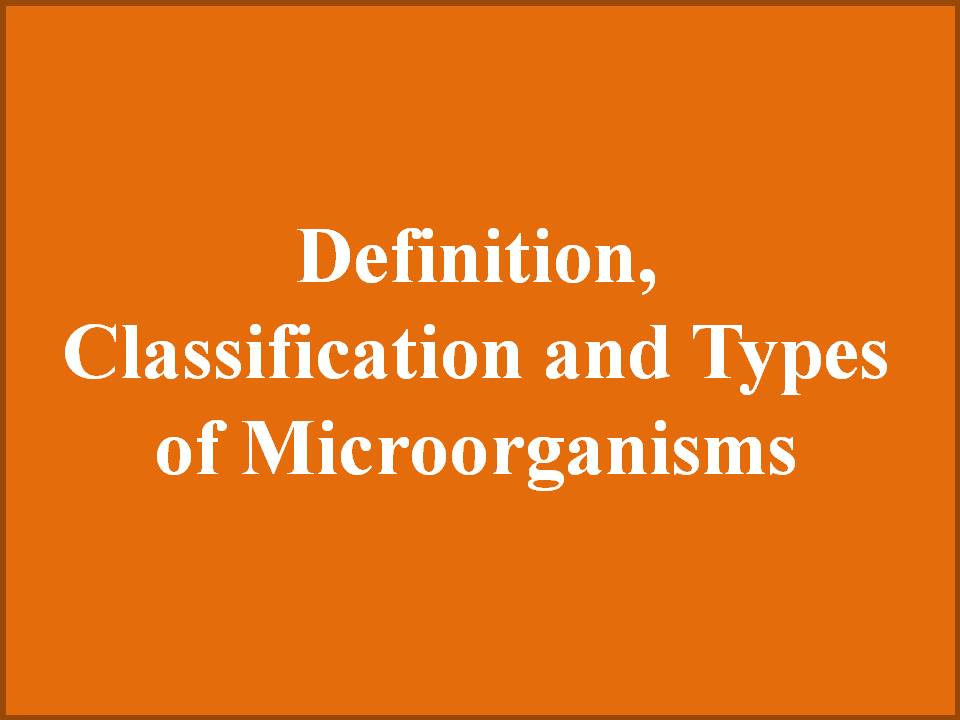This article contains notes on Definition, Classification and Types of microorganisms:-
Definition of Microorganisms
Microbes or microorganisms are microscopic organisms (i.e., they are not visible to naked eye) that exist as unicellular, multicellular, or cell clusters. Microorganisms are widespread in nature (they make up almost 60% of the earth’s living matter) and are beneficial to life, but some can cause serious harm.
Types of Microbes
Microorganisms can be divided into seven major types:
- Bacteria
- Archaea
- Protozoa
- Algae
- Fungi
- Viruses
- Multicellular animal parasites (Helminths)
Detailed Classification
Bacteria
- Unicellular, prokaryotic microorganisms
- Cells lack a nucleus (prokaryotic)
- Four major shapes:
- Bacillus (rod-shape)
- Coccus (spherical or circular shape)
- Spirillum (spiral or helical shape)
- Vibroid (comma-shaped)
- Characteristics:
- Have peptidoglycan cell wall
- Divide by binary fission
- May possess flagella for motility
- Cell wall structure is a major feature used in classification
Classification Methods of Bacteria
- By Cell Wall Structure (Gram staining):
- Gram-positive
- Gram-negative
- By Oxygen Requirements:
- Aerobic (living in the presence of oxygen)
- Anaerobic (living without oxygen)
- Facultative (can live in both environments)
- By Mode of Nutrition:
- Autotrophs
- Photoautotrophs (use sunlight energy)
- Chemoautotrophs (use chemical compounds)
- Heterotrophs (three categories):
- Parasitic (feed on living organisms)
- Saprophytic (grow on dead and decaying organic matter)
- Symbiotic (grow in beneficial association with other organisms)
- Autotrophs
Archaea
- Also called archaebacteria
- Differ from true bacteria in cell wall structure
- Lack peptidoglycans
- Prokaryotic cells adapted to extreme environmental conditions
- Groups:
- Methanogens (methane-producing archaeans)
- Halophiles (found in regions of high salinity)
- Thermophiles (found in extremely hot temperatures)
- Psychrophiles/cryophiles (live at extremely cold temperatures)
- Energy sources: hydrogen gas, carbon dioxide, sulphur
- Some use sunlight (phototrophic forms)
- Use bacteriorhodopsin instead of bacteriochlorophyll
Algae
- Unicellular or multicellular eukaryotes
- Obtain nourishment by photosynthesis
- Habitat: water, damp soil, and rocks
- Produce oxygen and carbohydrates used by other organisms
- Ocean algae produce around 50-70% of oxygen in the atmosphere
Protozoa
- Unicellular aerobic eukaryotes
- Have nucleus, complex organelles
- Obtain nourishment by absorption or ingestion through specialized structures
- Largest group in terms of number, biomass, and diversity
- Classification based on locomotion:
- Flagellates (use whip-like structure)
- Ciliates (have tiny beating hair)
- Amoeboids (use pseudopodia)
- Sporozoans (non-motile)
Fungi
- Eukaryotic cells with true nucleus
- Mostly multicellular
- Cell wall composed of chitin
- Nutrition methods:
- Decomposers (absorbing organic material)
- Symbionts (symbiotic relationships with plants)
- Parasites (harmful relationships with host)
- Form filamentous tubes called hyphae
- Collection of hyphae called mycelium
- Reproduce by releasing spores
Viruses
- Non-cellular entities
- Consist of nucleic acid core (DNA or RNA) surrounded by protein coat
- Not considered living organisms
- Cannot reproduce outside host cell
- Cannot metabolize on their own
- Can infect prokaryotic and eukaryotic cells causing diseases
Multicellular Animal Parasites
- Eukaryotic organisms (flatworms and roundworms)
- Collectively referred to as helminths
- Not technically microorganisms (visible to naked eye)
- Have microscopic life cycle stages
- Included due to clinical importance
This article was about the Definition, Classification and Types of Microorganisms. For more visit easybiologynotes.com.
